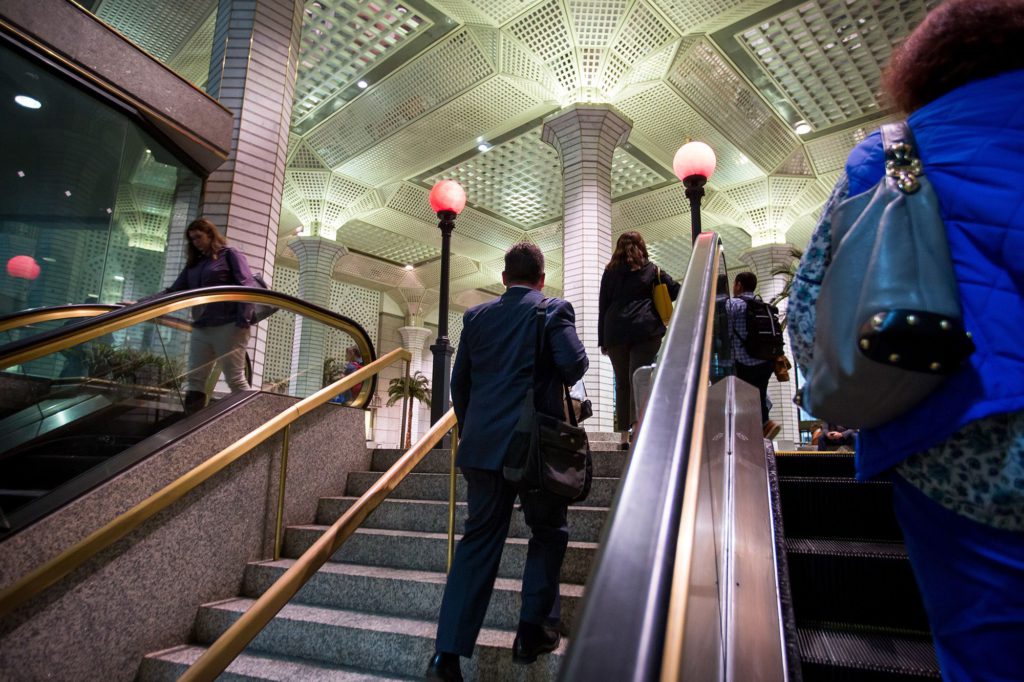New York City’s business districts would get a makeover under a blueprint unveiled Wednesday, with recommendations to convert office space to residential areas, make outdoor dining permanent and improve transit.
(Bloomberg) — New York City’s business districts would get a makeover under a blueprint unveiled Wednesday, with recommendations to convert office space to residential areas, make outdoor dining permanent and improve transit.
The report from a committee of business leaders including Goldman Sachs Chief Executive David Solomon and Coldwell Banker Richard Ellis CEO Mary Ann Tighe contains 40 recommendations to re-imagine the city’s business districts as around-the-clock, mixed-use destinations.
New York Governor Kathy Hochul and New York City Mayor Eric Adams launched the “New” New York Panel seven months ago as an effort to re-engage a business community still reeling from the pandemic as their employees work from home or flee to other lower-tax locales.
“We can’t just sit here in la-la land and hope it happens eventually. We have to start now,” Hochul said during a presentation of the report.
None of the proposals are legally binding, nor is it clear how local and state officials will achieve their goals. Still, the report lays out some clear targets: Cut Manhattan office vacancy rates to 10% by 2025 from 22% in 2022, decrease average commute times for New Yorkers to 30 minutes from 41 minutes, and reduce the unemployment rate to 3.7% by 2025 from 5.9% in October 2022.
Dan Doctoroff, a former deputy mayor who served as co-chairman of the panel, said the initiatives were “all specific enough to get going.”
The panel sought to balance the competing interests among office workers, commuters, residents and small businesses. While promoting the expansion of open streets and outdoor dining — which became a huge hit during the pandemic — the report also acknowledged the impact of shrinking thoroughfares on street parking, deliveries and cross-town traffic.
To manage that tension and oversee the city’s street scape, the report recommends a new Office of Public Realm at City Hall, which will also spearhead efforts to overhaul waste collection in business districts and the rat problem that comes with it.
The report put an emphasis on converting vacant commercial and office space to residential, making it easier for people to work near where they live. But Doctoroff said quality-of-life issues will be paramount. “We’re not going to dictate how people are going to work. We can certainly make it more appealing in Midtown and Lower Manhattan. But we have to accept that people are going to work where they want to work,” he said.
The panel started with a focus on business districts but expanded to transit, housing and inclusiveness.
“What became very clear is that you can’t have a strategy around central business districts without having a strategy for the broader city and the region. Because those business districts are part of an ecosystem,” said Richard Buery, the CEO of the Robin Hood Foundation who led the panel with Doctoroff.
Off-Peak Services
The report calls for a sustainable operating budget for the Metropolitan Transportation Authority, with more off-peak services and faster buses but without outsize fare increases and service cuts.
The 59-member panel was led by Buery, who served as deputy mayor under former Mayor Bill de Blasio, and Doctoroff, who served under former Mayor Michael Bloomberg. Doctoroff is also the former chief executive officer and president of Bloomberg LP, the parent company of Bloomberg News.
Other prominent business leaders on the panel included Bank of America Vice Chair Jose Tavarez, Regeneron Pharmaceuticals co-founder George Yancopoulos and Tishman Speyer CEO Rob Speyer.
(Updates with comments from report authors beginning in fourth paragraph.)
More stories like this are available on bloomberg.com
©2022 Bloomberg L.P.










